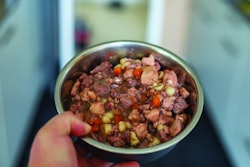
We’re more than halfway through 2021, and though the economy and life overall are still a bit unsettled as we all strive to emerge from COVID-19, pet food mergers and acquisitions (M&A) have occurred regularly and frequently throughout the year. In fact, at least 20 pet food deals have occurred to date.
This is a testament to the market’s ongoing growth and health, spurred even higher by a banner 2020 despite—and, almost paradoxically, because of—the pandemic. Before 2020, pet food was attracting new investors in the form of human food companies, private equity and the like; and while that slowed somewhat last year, the focus and activity have accelerated again in 2021 thanks to the rise in pet ownership and spending on pet food and other products and services.
As one investor commented: “We love the macro trends in the pet industry. It is stable and growing, driven by an increased focus on pet wellness, nutrition and health that has resulted from the shift to treating our pets like family members.” This came from Adam Fuchs, principal at A&M Capital Partners, which acquired the majority interest in BrightPet Nutrition Group in October 2020. (BrightPet itself has since been busy on the M&A front, buying MiracleCorp, a pet treats company, in January 2021.)
Fuchs was quoted by Carol Frank, a longtime pet industry expert, including as an M&A advisor, in an article for Pet Age. In addition to the long-term trends and variables that have long attracted investors to the pet industry, she explained two other reasons unique to these post-COVID times.
Pending US tax concerns spurring pet food M&A now?
According to Frank, when the Biden administration announced earlier this year a proposal to increase the capital gains tax rate, that created a “sense of urgency” among owners of U.S. pet product companies. “Many founders/owners who are hoping to exit their business soon are pushing their timeline up to minimize the tax consequences of a sale,” she wrote. The proposal calls for the tax rate to nearly double.
Current environment difficult for small players
Though the pet food and pet industries have weathered the past, rocky months remarkably well, they have not escaped the supply chain and other disruptions roiling many industries. Frank turned to insights from David Blatte, chairman of the board of Worldwise Corp. (a maker of pet products), on how rising vendor and operating costs are more difficult for smaller companies to handle. These companies struggle to pass on the higher costs to their customers, then suffer a loss of profitability.
“You need scale to make it in today’s environment,” Blatte said, quoted by Frank. “For example, freight rates have more than tripled and it is still hard to secure containers. The lead times have increased substantially—so the little guys will continue to get squeezed out.”
The pet food industry (along with most others) has a long history of small startups being acquired by larger competitors; indeed, some players enter the market with that as a key aspect of their business strategy. But it seems the pandemic and ongoing logistic disruptions are compounding the situation now, possibly speeding up implementation of such strategies.
Will entrepreneurs be discouraged from entering pet food?
Indeed, many M&A deals occurring so far this year fall under the large-dog-gobbles-up-smaller-dog model. The roller-coaster business environment, along with the tax situation in the U.S., may be impelling more small companies to seek investment or sales suitors sooner rather than later.
Which means we can expect pet food M&A activity to continue at a fast clip. As the headline of Marks’ article asserts, it shows no signs of slowing down—at least not through the rest of 2021 and possibly a few more years, according to Marks and the experts she consulted.
It’s certainly understandable if smaller players decide to sell and move on now, given the current situation. Let’s just hope that doesn’t discourage new players and entrepreneurs from entering the pet food market. They have long infused the industry with energy, innovation and enthusiasm, and it would be a shame for that to dampen or even disappear.


















